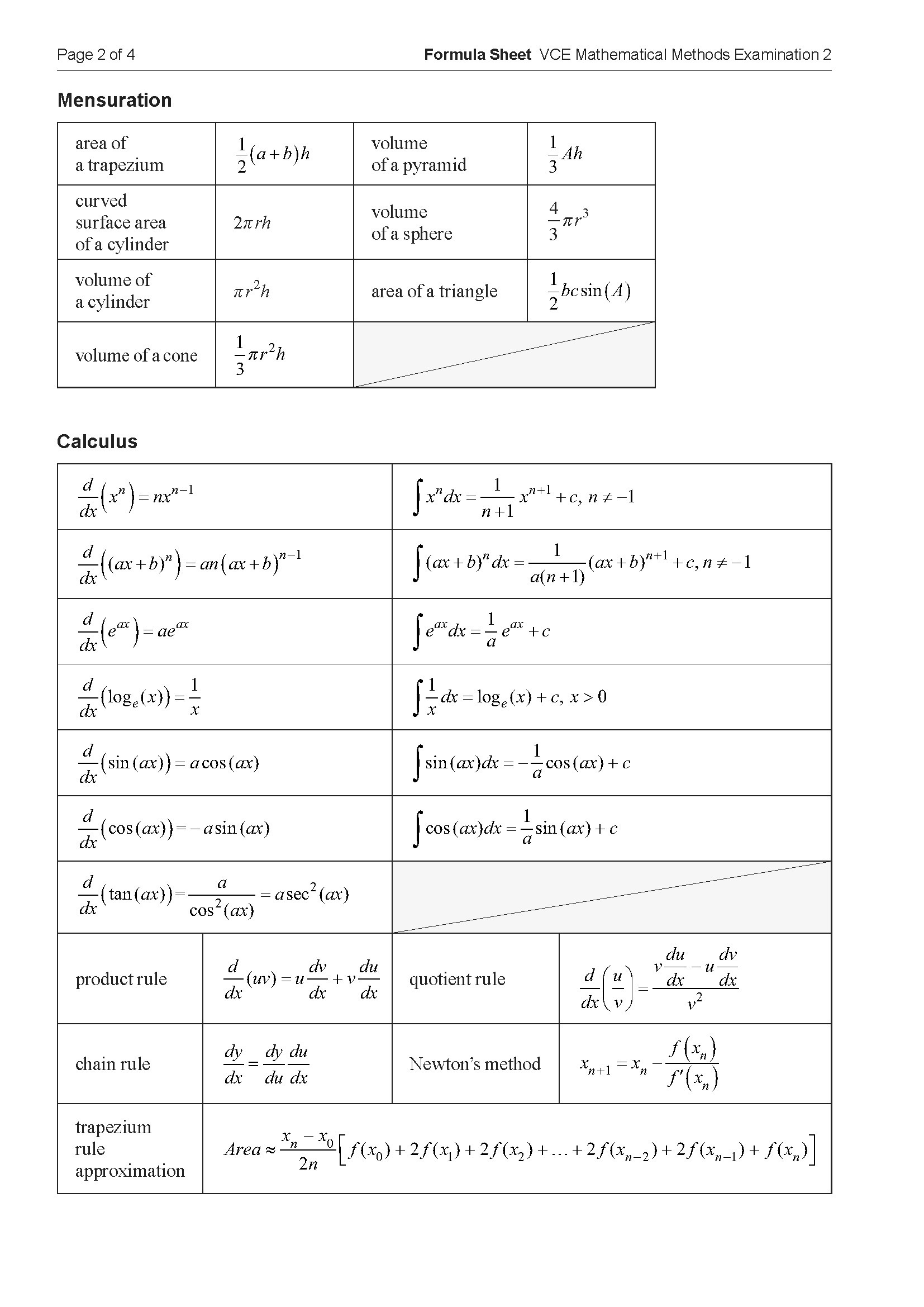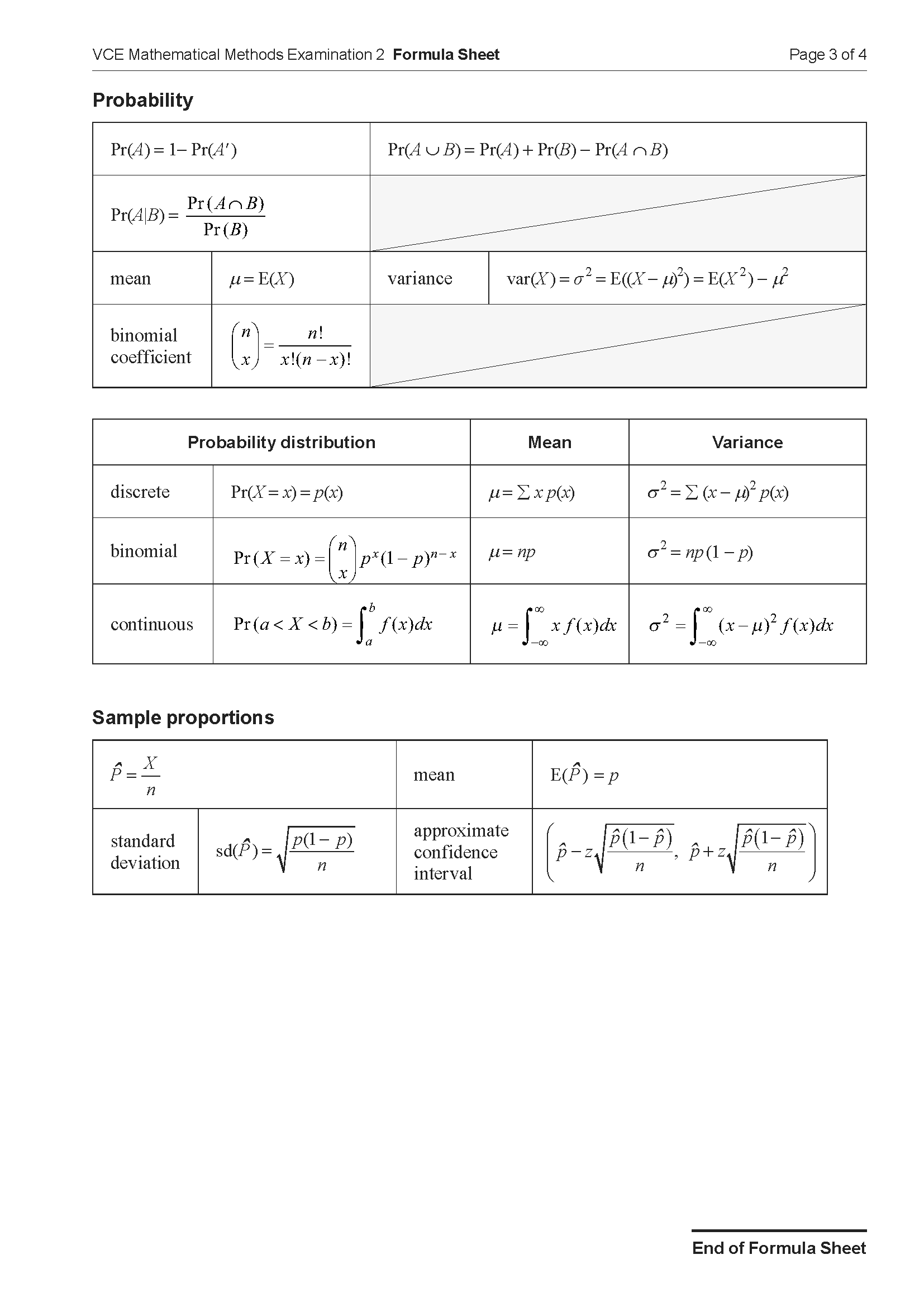2017 VCE Maths Methods Mini Test 1
Number of marks: 10
Reading time: 2 minutes
Writing time: 15 minutes
Section A – Calculator Allowed
Instructions
• Answer all questions in pencil on your Multiple-Choice Answer Sheet.
• Choose the response that is correct for the question.
• A correct answer scores 1; an incorrect answer scores 0.
• Marks will not be deducted for incorrect answers.
• No marks will be given if more than one answer is completed for any question.
• Unless otherwise indicated, the diagrams in this book are not drawn to scale.
Let \(f: R \to R, f(x) = 5\sin(2x) - 1\).
The period and range of this function are respectively
- A. \(\pi\) and \([-1, 4]\)
- B. \(2\pi\) and \([-1, 5]\)
- C. \(\pi\) and \([-6, 4]\)
- D. \(2\pi\) and \([-6, 4]\)
- E. \(4\pi\) and \([-6, 4]\)
Part of the graph of a cubic polynomial function \(f\) and the coordinates of its stationary points are shown below.

\(f'(x) < 0\) for the interval
- A. \((0, 3)\)
- B. \((-\infty, -5) \cup (0, 3)\)
- C. \((-\infty, -3) \cup (\frac{5}{3}, \infty)\)
- D. \((-3, \frac{5}{3})\)
- E. \((-\frac{400}{27}, 36)\)
End of Section A
Section B – No Calculator
Instructions
• Answer all questions in the spaces provided.
• Write your responses in English.
• In questions where a numerical answer is required, an exact value must be given unless otherwise specified.
• In questions where more than one mark is available, appropriate working must be shown.
• Unless otherwise indicated, the diagrams in this book are not drawn to scale.
a. Let \(f: (-2, \infty) \to R, f(x) = \frac{x}{x+2}\). Differentiate \(f\) with respect to \(x\). 2 marks
b. Let \(g(x) = (2 - x^3)^3\). Evaluate \(g'(1)\). 2 marks
Let \(y = x \log_e(3x)\).
a. Find \(\frac{dy}{dx}\). 2 marks
b. Hence, calculate \(\int_1^2 (\log_e(3x)+1)dx\). Express your answer in the form \(\log_e(a)\), where \(a\) is a positive integer. 2 marks
End of examination questions
VCE is a registered trademark of the VCAA. The VCAA does not endorse or make any warranties regarding this study resource. Past VCE exams and related content can be accessed directly at www.vcaa.vic.edu.au

